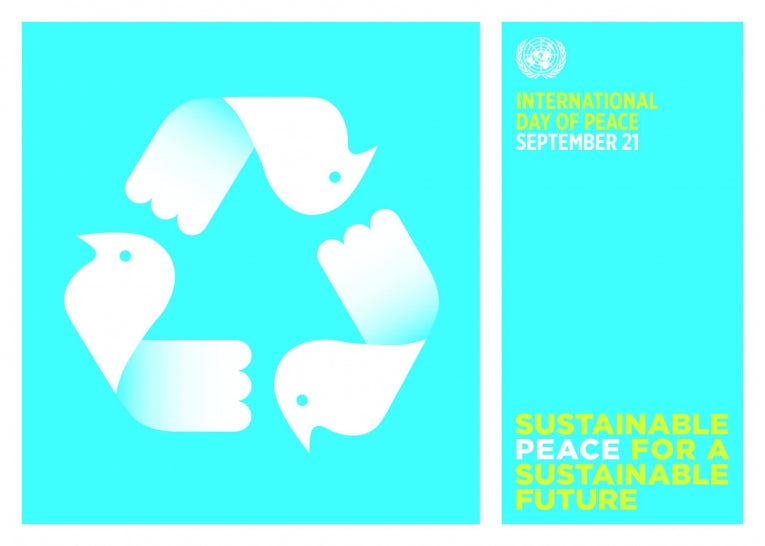From its inception following the end of World War II, one of the guiding principles of the United Nations (UN) has been the establishment and maintenance of world peace.
As long ago as 1954 the UN was presented with a Peace Bell. This was cast from metal obtained by melting down coins that had been collected from delegates by children, following the 13thGeneral Conference of the UN Associations held in Paris in 1951. The bell was presented to the UN by Japan at a time when Japan was still waiting to be formally admitted. Since then the bell has been symbolically rung on many special occasions.
Back in 1954, although the Korean War had ground to a halt the previous year, the Cold War was at its height and was set to continue for many years to come. The world at that time was living on a knife-edge and many firmly believed that a four-minute warning was all they would receive before they were blasted into oblivion.
There seemed to be little chance that world would ever be free from the constant threat of imminent conflict or sudden termination, but over the course of the next few decades attitudes gradually began to soften and world peace no longer seemed to be such a remote possibility.
In 1981, following a resolution jointly sponsored by the United Kingdom and Costa Rica, the UN General Assembly declared that from henceforth an International Day of Peace would be declared on the third Tuesday of September each year, to coincide with the opening day of regular sessions of the General Assembly.
For the next 20 years this became the pattern, but it gradually became clear that a fixed date would be preferable, so from 2002 the International Day of Peace has fallen on 21st September.
The day is observed by millions of people worldwide as a day of global ceasefire and non-violence and begins with the ringing of the Peace Bell at the UN Headquarters in New York. Local events will vary, but these commonly include interfaith peace ceremonies, peace choirs and concerts, lighting candles for peace, tree planting, art exhibitions, picnics and peace walks. People around the world are encouraged to pause for a few moments of reflection at noon, local time.
As the organisers point out, anyone, anywhere can celebrate Peace Day. It might be by participating in a large public event with thousands of other people, or it might simply be sitting alone in silent meditation.
This year the United Nations Conference on Sustainable Development met in Rio. With this Rio+20 Conference in mind, the theme for the 2012 International Day of Peace is The message for 2012 Sustainable Peace for a Sustainable World. The logic is that there can be no sustainable future without a sustainable peace and sustainable peace must be built on sustainable development.
Many conflicts are directly affected by the availability and ownership of valuable natural resources such as diamonds, gold, oil, timber or water. Addressing the ownership, control and management of natural resources is crucial to maintaining security and restoring the economies of war-torn countries.
As UN Secretary-General Ban Ki-Moon put it, "it is impossible to think about building a sustainable future if there is no sustainable peace. Armed conflicts attack the very pillars of sustainable development, robbing people of the opportunity to develop, to create jobs, to safeguard the environment, to fight poverty, to reduce the risk from disasters, to advance social equality and to ensure that everyone has enough to eat."
Ban Ki-Moon went on to say that what is needed is a future where natural resources are protected and valued, rather than used to finance wars. He looked for a world where children are educated in schools rather than recruited into armies and where social inequalities are resolved through dialogue instead of through violence.
The International Day of Peace is also a Day of Ceasefire, both political and personal. Associated with this is an international campaign called Global Truce. This is an international initiative involving non-governmental organisations and student unions all over the world and this will increase participation and action on Peace Day. The particular focus for 2012, along with cessation of hostilities is the reduction of domestic violence and bullying in society.
It is clear that there is an enormous worldwide desire for peace. When the UN received its Peace Bell in June 1954 its Japanese donors referred to it as "a reminder of the human cost of war". Inscribed on one side of the bell, in Japanese, is the inscription: "Long live absolute world peace".
Few would disagree with this sentiment and countless numbers are fighting towards achieving this aim, but it is clear that there is still a long way to go.










